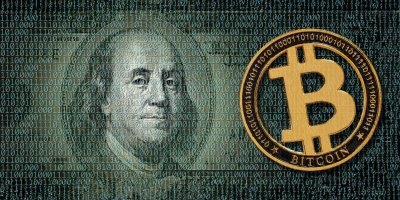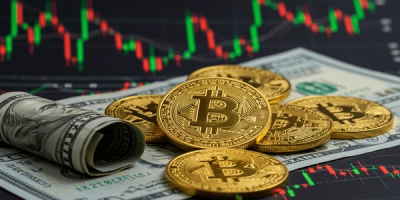What Fees Should You Expect When Using a Bitcoin ATM?
If you’re just getting started with Bitcoin or you’re someone who prefers real-world convenience over digital complexity, chances are you’ve thought about using a Bitcoin ATM. I’ve been there myself. Whether I was converting cash to Bitcoin on the spot or cashing out some BTC to use for everyday purchases, Bitcoin ATMs made that process incredibly fast and accessible. But like most people, I had one major question before making my first transaction: what are the fees? And how much do I really lose in the process? Understanding the fees associated with Bitcoin ATMs is essential if you want to avoid surprises. In this guide, I’ll break down exactly what fees you should expect when using a Bitcoin ATM, why they exist, how they compare to other platforms, and what you can do to minimize them without sacrificing convenience. Whether you’re a first-timer or someone who uses these machines regularly, this information can help you keep more of your money where it belongs—in your wallet.
Why Bitcoin ATMs Charge Fees—and Why It’s Not Always a Bad Thing
Let’s be real: no one likes paying fees. But once I understood where those fees come from and what they support, it helped put things into perspective. Bitcoin ATMs are physical machines that cost money to install, operate, and secure. Operators are responsible for everything from cash storage and armored truck pickups to software licensing, machine maintenance, and customer support. On top of that, they must comply with strict state and federal regulations, including Know Your Customer (KYC) and Anti-Money Laundering (AML) protocols. All of these costs add up. And because these machines often serve underbanked or cash-preferred customers, they fill a vital role in local communities. So yes, you’ll pay more in fees compared to online exchanges, but you’re also paying for a level of accessibility, convenience, and immediacy that no traditional exchange offers. For many people, especially those without access to bank accounts or digital wallets, that trade-off is completely worth it.
The Most Common Bitcoin ATM Fees You’ll Encounter
Now let’s get into the actual numbers. In my experience and research, there are three main categories of fees that most users encounter when using a Bitcoin ATM. Knowing these in advance can help you decide whether you’re getting a fair deal.
1. Transaction Fees (Percentage-Based or Flat)
This is the fee most users notice first. It’s typically a percentage of your total transaction amount and is charged by the ATM operator. Transaction fees can vary based on the provider, your location, and even market demand. Most machines I’ve used have charged anywhere from 6% to 20%, with 10% to 12% being the most common. For example, if you’re buying $300 worth of Bitcoin and the ATM charges a 10% fee, you’ll actually receive $270 worth of Bitcoin. That $30 fee covers the service, compliance, and operational costs associated with the transaction. Some operators use flat fees for small transactions, but percentage-based fees are far more common.
2. Exchange Rate Markup
This one is sneakier but just as important. In addition to the transaction fee, many Bitcoin ATM operators apply a markup to the exchange rate. This means they offer Bitcoin at a price above the current market rate when you’re buying, or below the market rate when you’re selling. So even if a machine advertises a 10% fee, the total cost may be higher due to an inflated BTC price. For instance, if the market rate of Bitcoin is $30,000, the machine may sell it to you at $31,500—effectively charging an additional 5% markup. It’s always a good idea to check the current BTC price before completing your transaction to calculate the true cost.
3. Blockchain Network Fees (a.k.a. Miner Fees)
Any time you send Bitcoin on the blockchain, the network charges a miner fee to process the transaction. This is not specific to ATMs and varies depending on network congestion. Some Bitcoin ATM operators absorb this fee and include it in your final cost, while others pass it on directly. Depending on the time of day and blockchain activity, these fees can range from a few cents to several dollars. While it’s a small piece of the puzzle compared to transaction and markup fees, it still contributes to the total cost.
Other Fees You Might See (But Not Always)
While less common, I’ve also come across a few additional charges that are worth mentioning.
Cash Handling Fees
Some Bitcoin ATMs, particularly those that allow you to sell Bitcoin for cash, might include a fee for large cash disbursements. These are typically disclosed during the transaction process but can come as a surprise if you’re withdrawing a high amount.
Identity Verification Fees
Most reputable Bitcoin ATM operators require ID verification for transactions above a certain threshold (often around $900). This is a compliance requirement, not a scam. While the ID verification process itself doesn’t usually incur a fee, I’ve seen less-reputable operators tack on charges related to KYC compliance. Stick to companies that are upfront about their verification process and don’t charge extra for it.
Minimum Transaction Fees
Some Bitcoin ATMs enforce a minimum transaction fee—for example, $2 or $5—especially on smaller buys. This can make tiny purchases less cost-effective, so if you’re only planning to buy $20 worth of BTC, you might end up paying more than 20% in effective fees.
Are Bitcoin ATM Fees Really That High Compared to Other Options?
When I first started comparing Bitcoin ATM fees to online exchanges, the difference seemed huge. On Coinbase or Binance, you might only pay 1.5% to 2.5% per transaction. But here’s the thing: using a Bitcoin ATM isn’t just about the lowest fee possible. It’s about immediacy, cash usage, and simplicity. With an exchange, you’ll need to link a bank account, wait for verifications, deposit funds, and possibly wait several days for your crypto to clear. That’s not ideal if you need Bitcoin right away or if you’re one of the many people who either don’t have or don’t want to use a traditional bank. In that sense, the extra fee is a premium for real-time service and accessibility. For many users—especially those converting physical cash to digital currency or vice versa—it’s a small price to pay for the convenience and peace of mind.
How to Minimize Bitcoin ATM Fees (Without Sacrificing Convenience)
Even if you accept the convenience trade-off, there are still smart ways to reduce your total cost. I’ve learned a few tricks over the years that help me get better value from every transaction.
Choose a Reputable Operator
Companies like America Bitcoin ATM are known for transparent pricing. They show you all fees and the real-time exchange rate before you confirm. That’s a big deal. Shady operators may hide their markup or fees until the last screen—or not show them at all. Always choose a machine that gives you all the info upfront.
Compare Bitcoin Prices Before You Transact
Before using a Bitcoin ATM, I always check the live market price of BTC on a trusted platform like CoinMarketCap or Kraken. Then, I compare it with the price shown on the ATM. That way, I can calculate the actual markup being applied and decide if it’s reasonable.
Use Off-Peak Hours
Since miner fees vary with blockchain congestion, using a Bitcoin ATM during off-peak times can save you on network fees. Mornings or weekends typically offer lower congestion.
Avoid Multiple Small Transactions
Since flat fees or minimum charges can eat into your value, it’s often smarter to do fewer, larger transactions rather than several small ones. If I plan to buy $400 worth of BTC over a week, I prefer to do it in one visit instead of four $100 transactions, which would cost more in cumulative fees.
Final Thoughts: Understanding Bitcoin ATM Fees Helps You Save
Bitcoin ATMs offer one of the most convenient, fast, and accessible ways to buy or sell crypto—especially with cash. But they do come with costs. The key is knowing what to expect. To recap: expect transaction fees of 6%–20% depending on the provider, be mindful of exchange rate markups that can quietly inflate your cost, and factor in any network or additional fees. While these fees may be higher than online exchanges, they’re often justified by the level of service, speed, and accessibility Bitcoin ATMs offer. If you use them wisely—by choosing transparent operators like America Bitcoin ATM, comparing rates, and optimizing your transaction timing—you can get the best of both worlds: convenience without getting overcharged. So next time you walk up to a Bitcoin ATM, you’ll know exactly what you’re paying for—and how to make it work in your favor.



